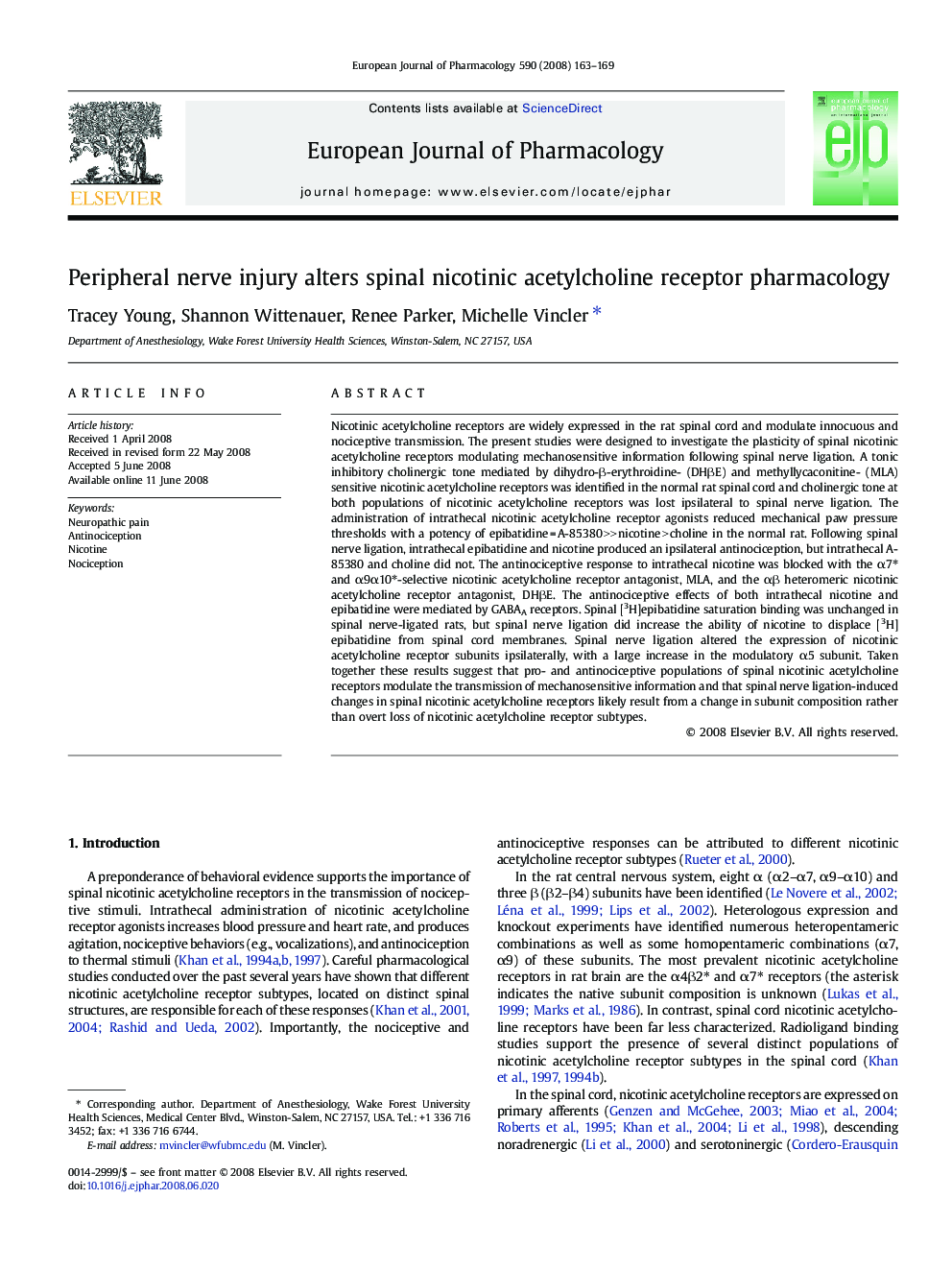| Article ID | Journal | Published Year | Pages | File Type |
|---|---|---|---|---|
| 2534939 | European Journal of Pharmacology | 2008 | 7 Pages |
Nicotinic acetylcholine receptors are widely expressed in the rat spinal cord and modulate innocuous and nociceptive transmission. The present studies were designed to investigate the plasticity of spinal nicotinic acetylcholine receptors modulating mechanosensitive information following spinal nerve ligation. A tonic inhibitory cholinergic tone mediated by dihydro-β-erythroidine- (DHβE) and methyllycaconitine- (MLA) sensitive nicotinic acetylcholine receptors was identified in the normal rat spinal cord and cholinergic tone at both populations of nicotinic acetylcholine receptors was lost ipsilateral to spinal nerve ligation. The administration of intrathecal nicotinic acetylcholine receptor agonists reduced mechanical paw pressure thresholds with a potency of epibatidine = A-85380 >> nicotine > choline in the normal rat. Following spinal nerve ligation, intrathecal epibatidine and nicotine produced an ipsilateral antinociception, but intrathecal A-85380 and choline did not. The antinociceptive response to intrathecal nicotine was blocked with the α7⁎ and α9α10⁎-selective nicotinic acetylcholine receptor antagonist, MLA, and the αβ heteromeric nicotinic acetylcholine receptor antagonist, DHβE. The antinociceptive effects of both intrathecal nicotine and epibatidine were mediated by GABAA receptors. Spinal [3H]epibatidine saturation binding was unchanged in spinal nerve-ligated rats, but spinal nerve ligation did increase the ability of nicotine to displace [3H]epibatidine from spinal cord membranes. Spinal nerve ligation altered the expression of nicotinic acetylcholine receptor subunits ipsilaterally, with a large increase in the modulatory α5 subunit. Taken together these results suggest that pro- and antinociceptive populations of spinal nicotinic acetylcholine receptors modulate the transmission of mechanosensitive information and that spinal nerve ligation-induced changes in spinal nicotinic acetylcholine receptors likely result from a change in subunit composition rather than overt loss of nicotinic acetylcholine receptor subtypes.
